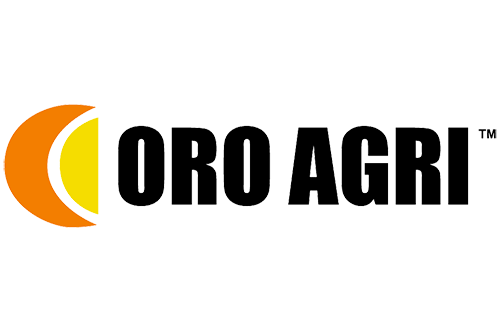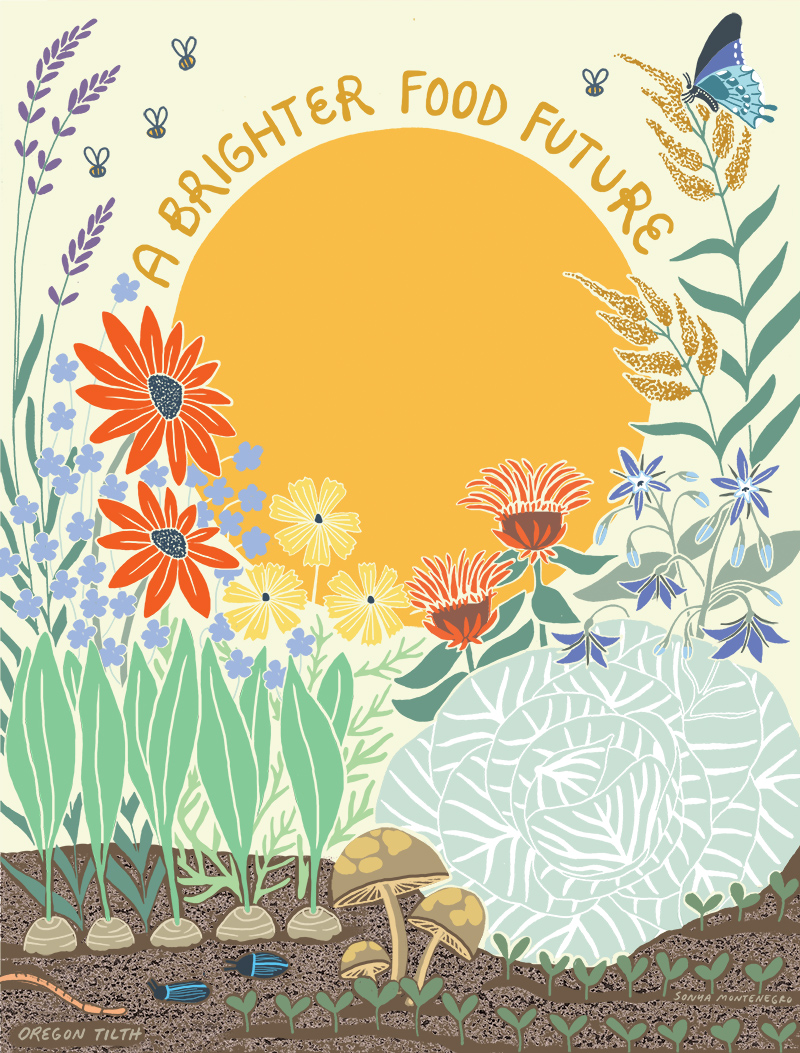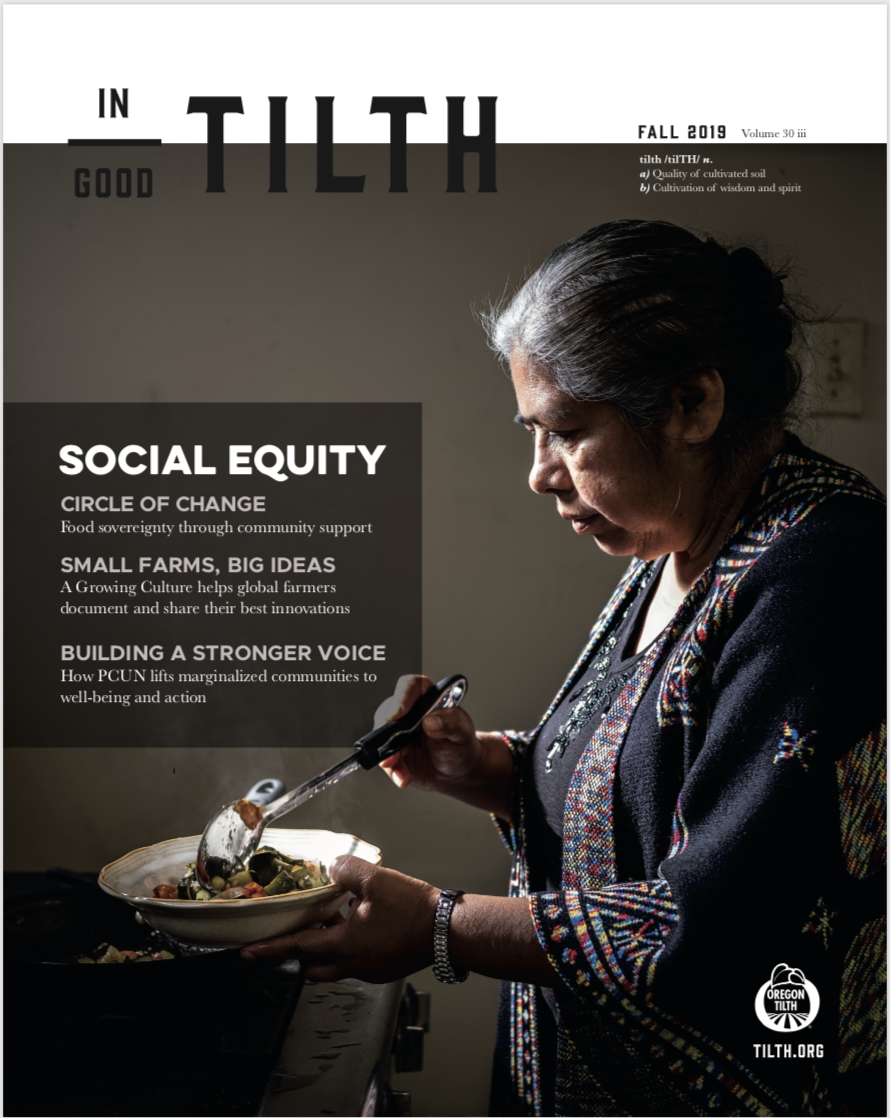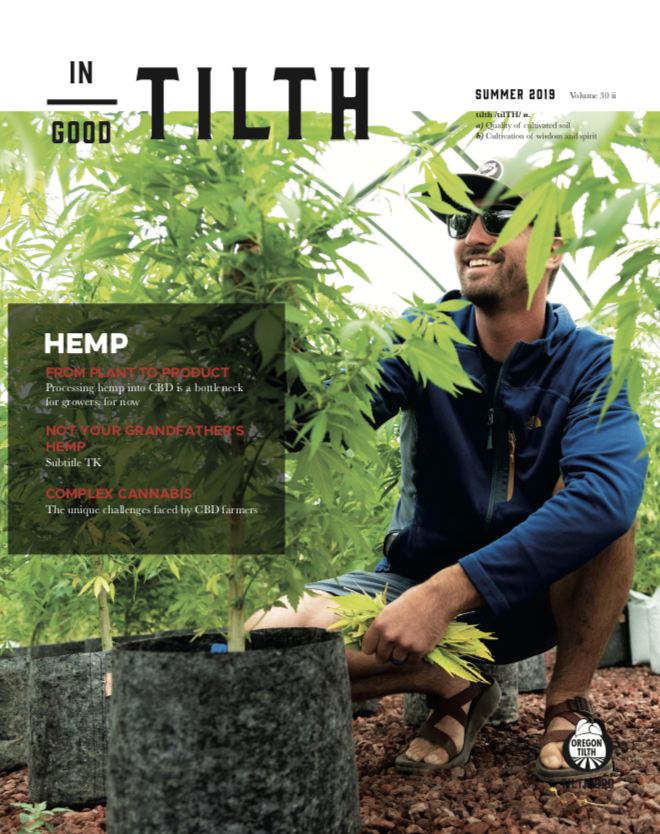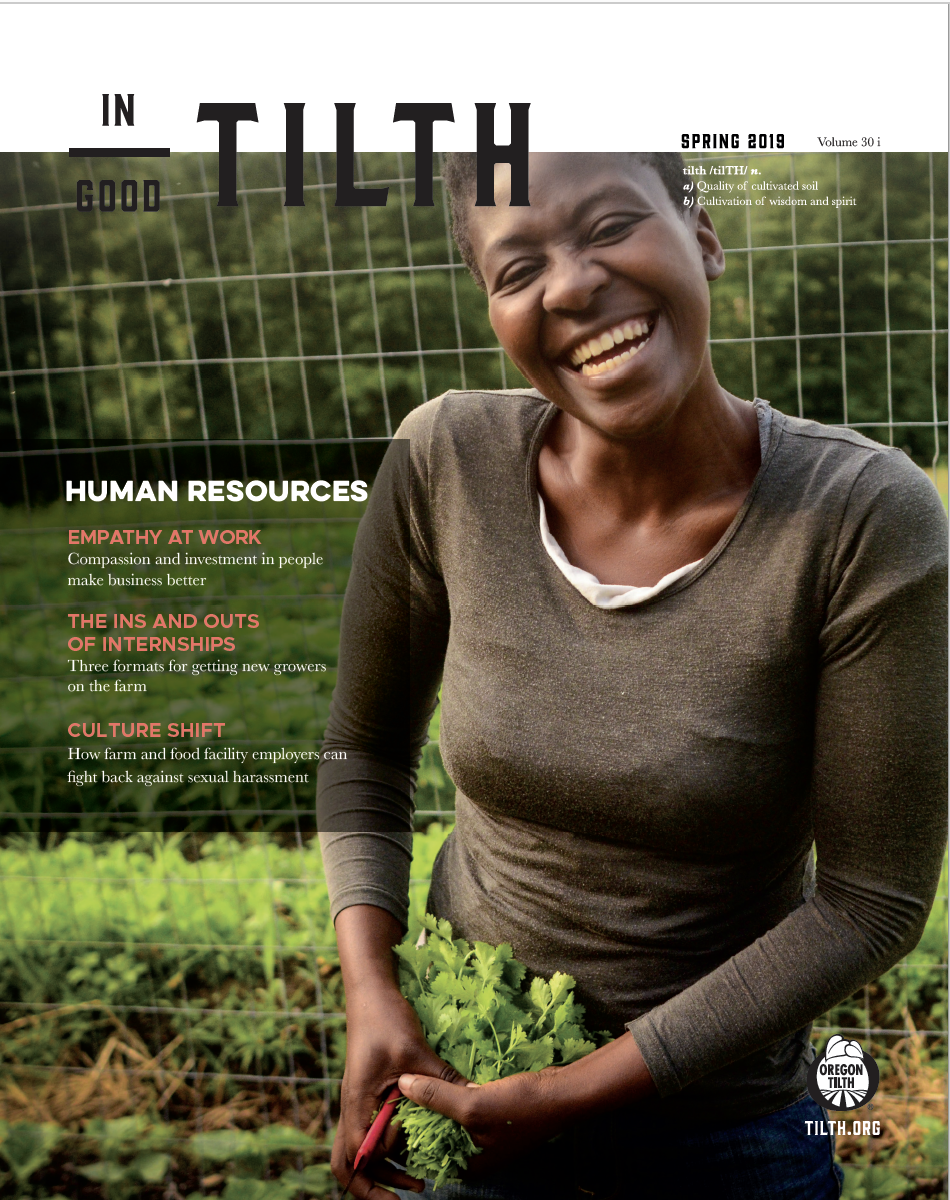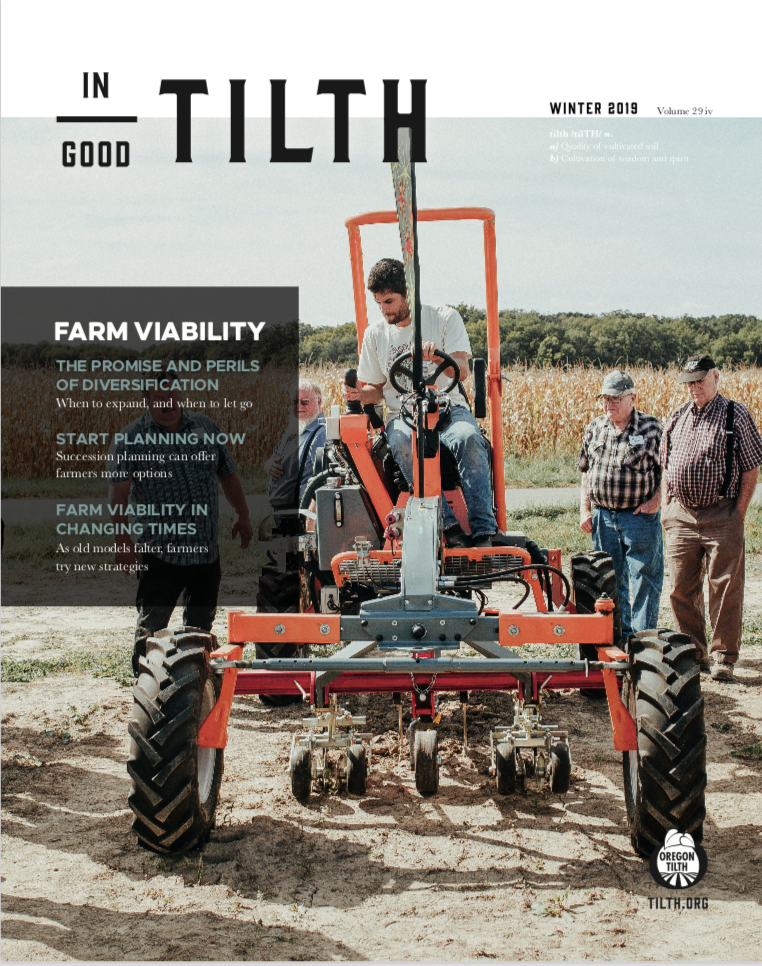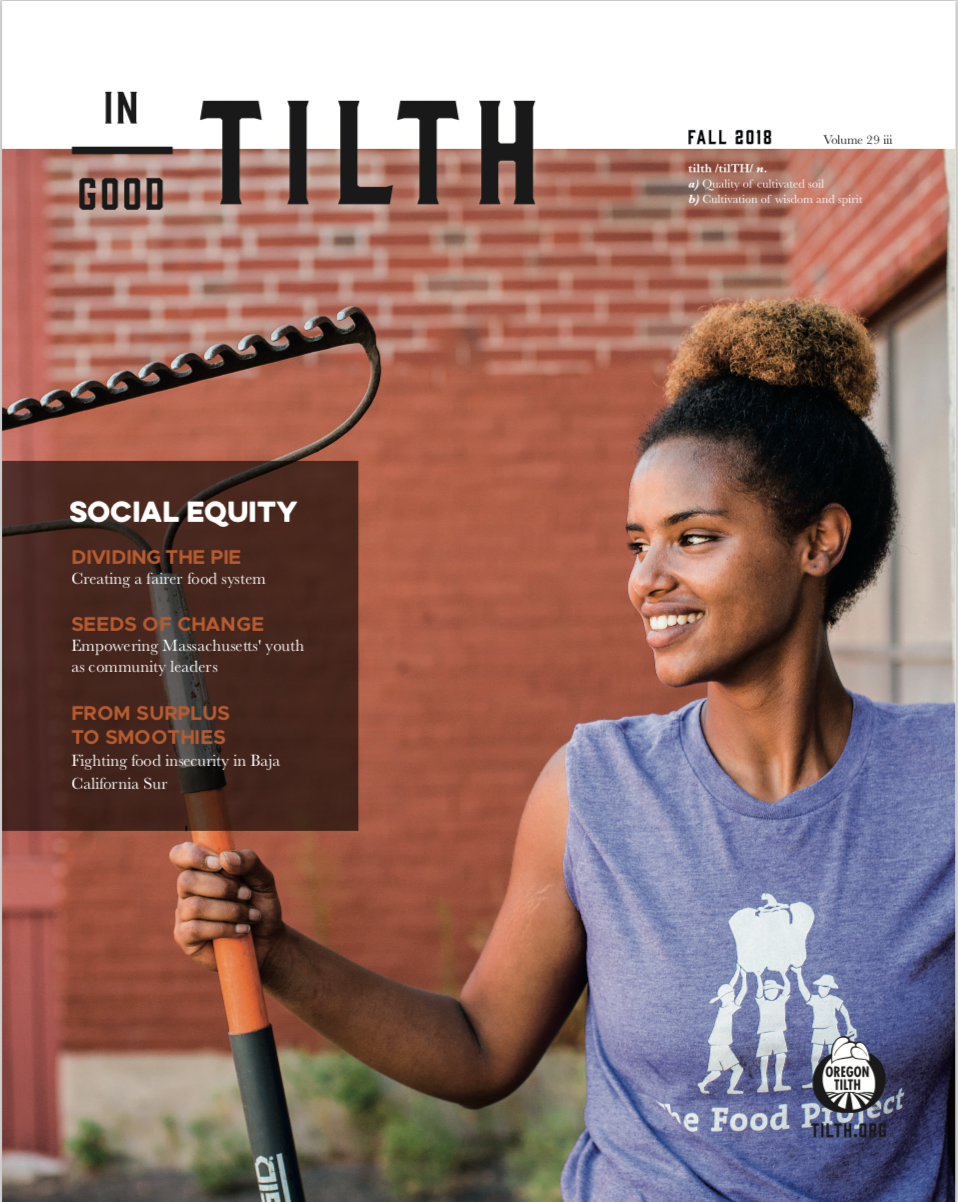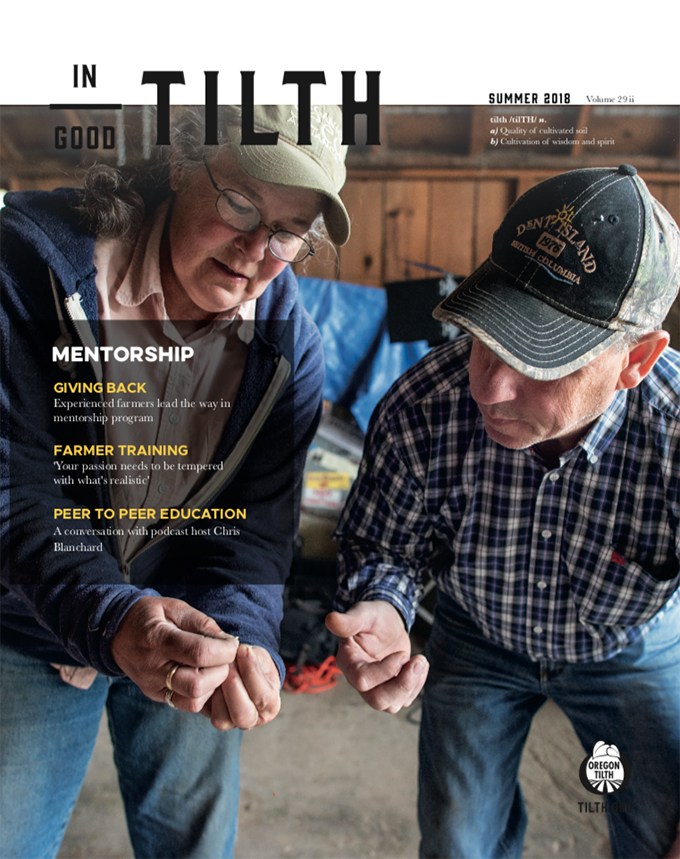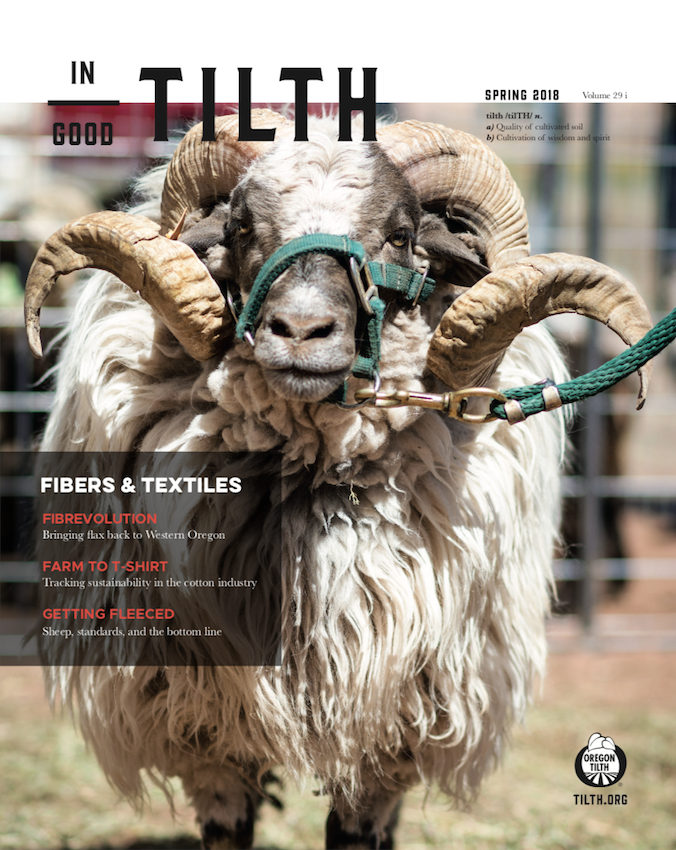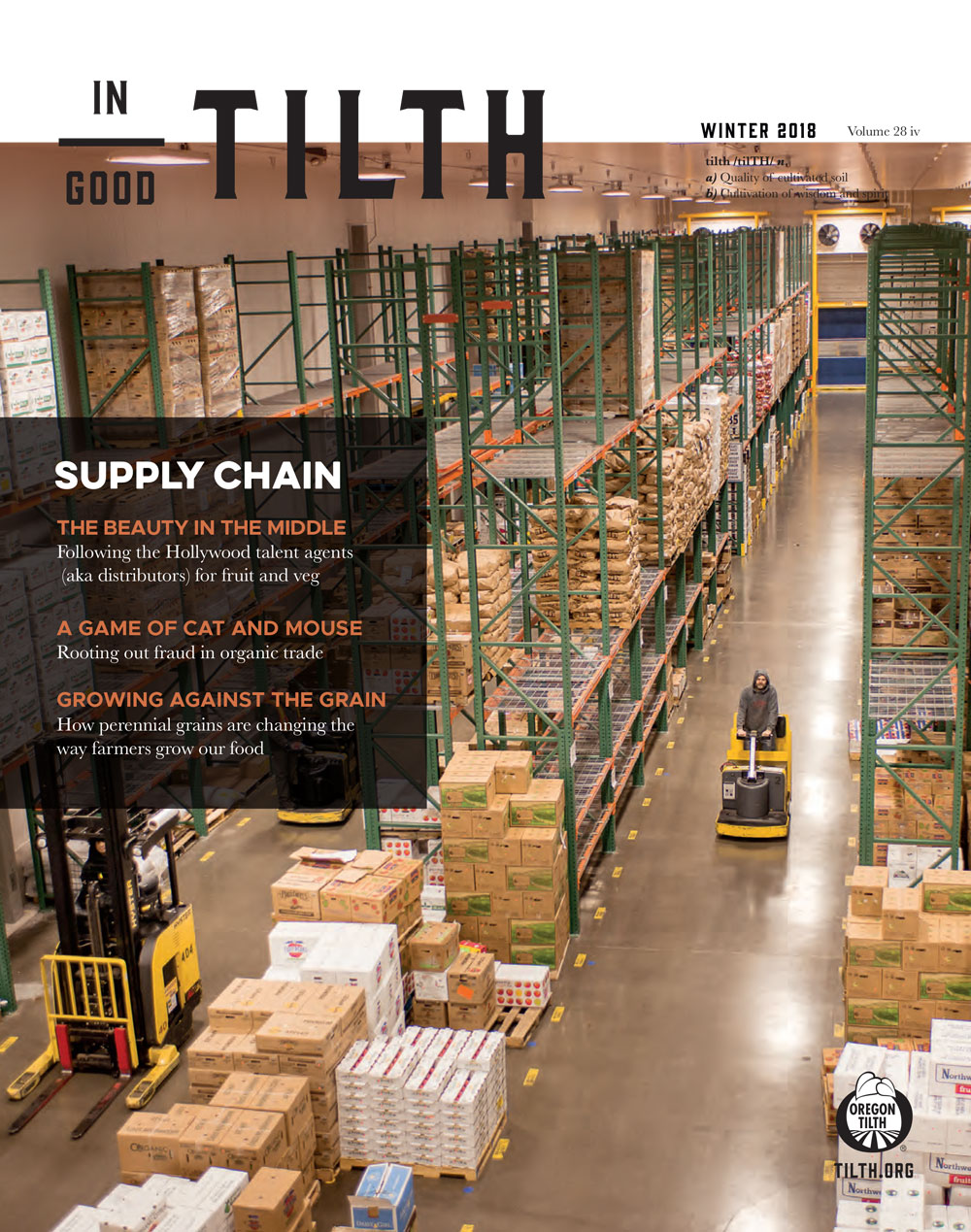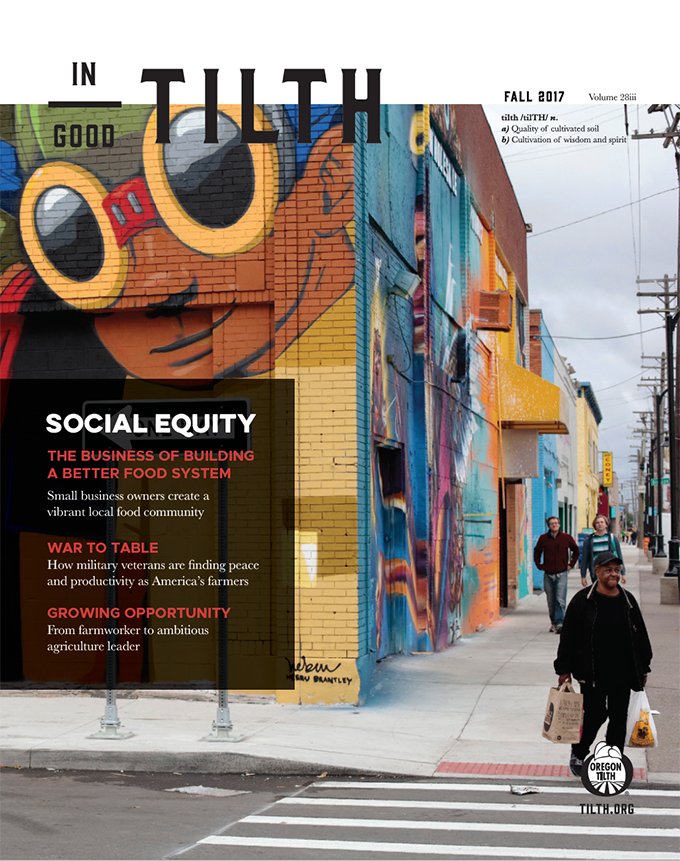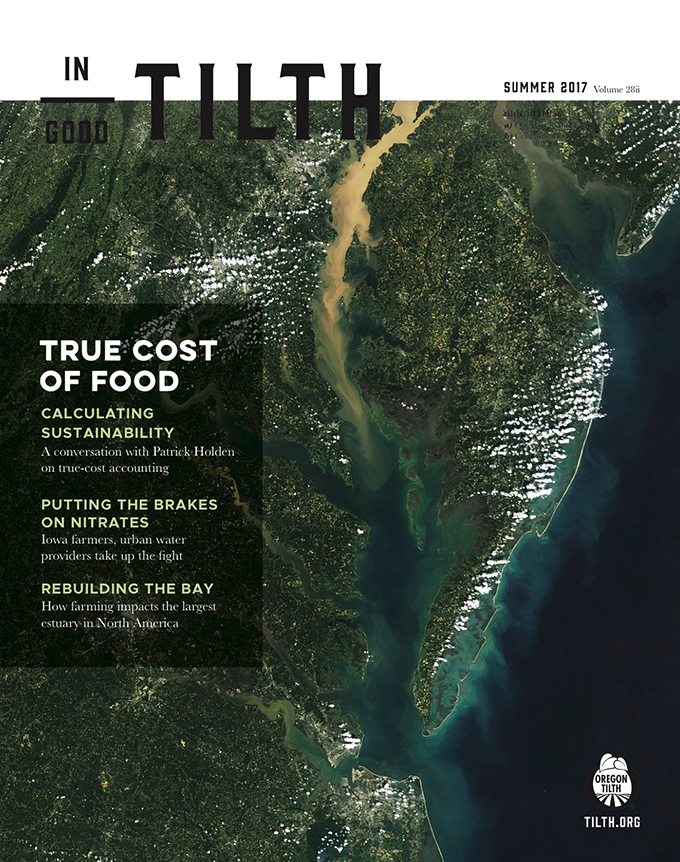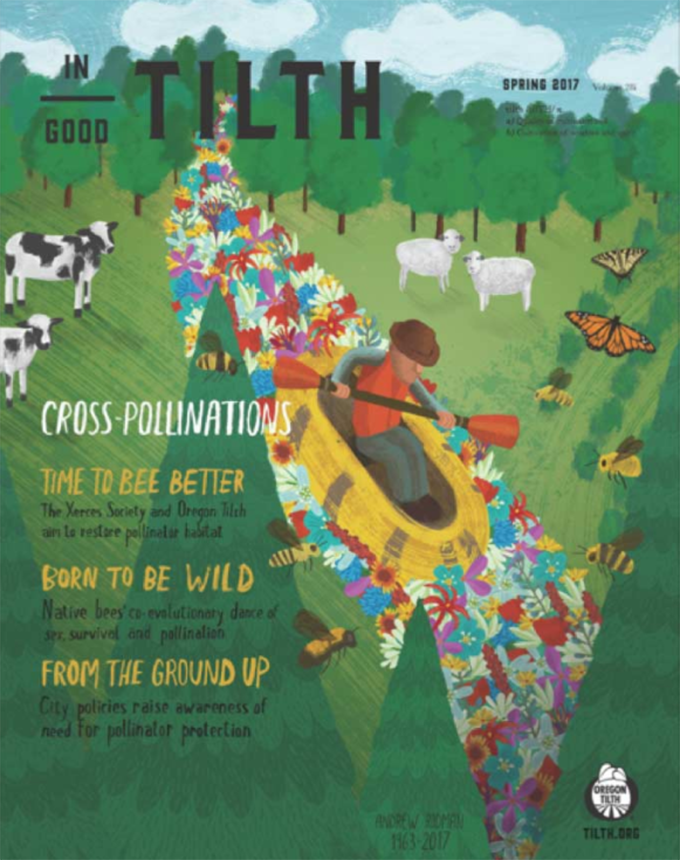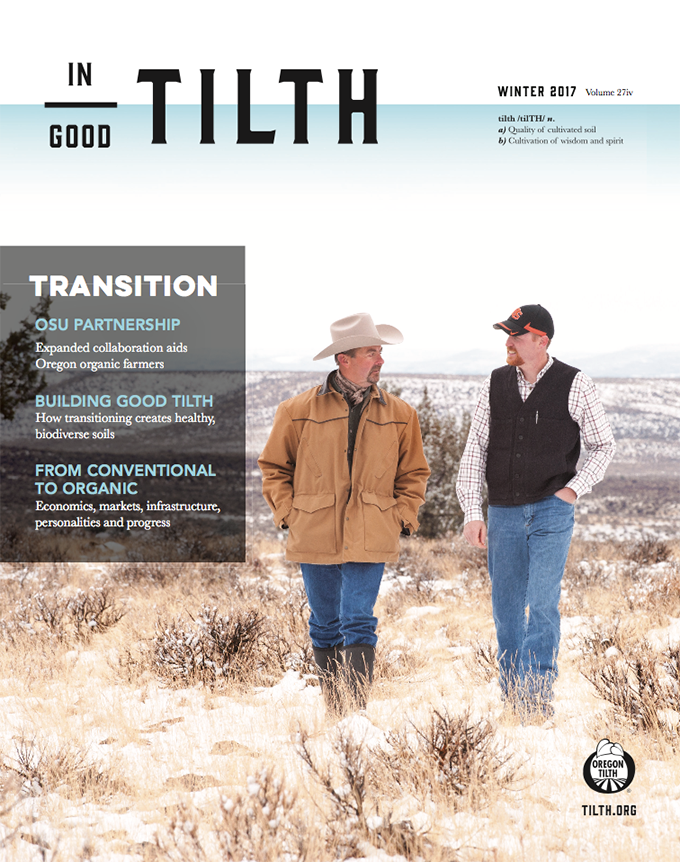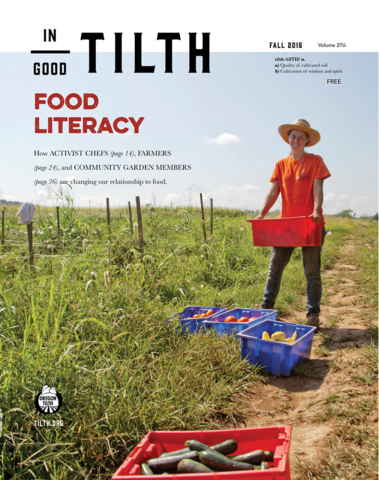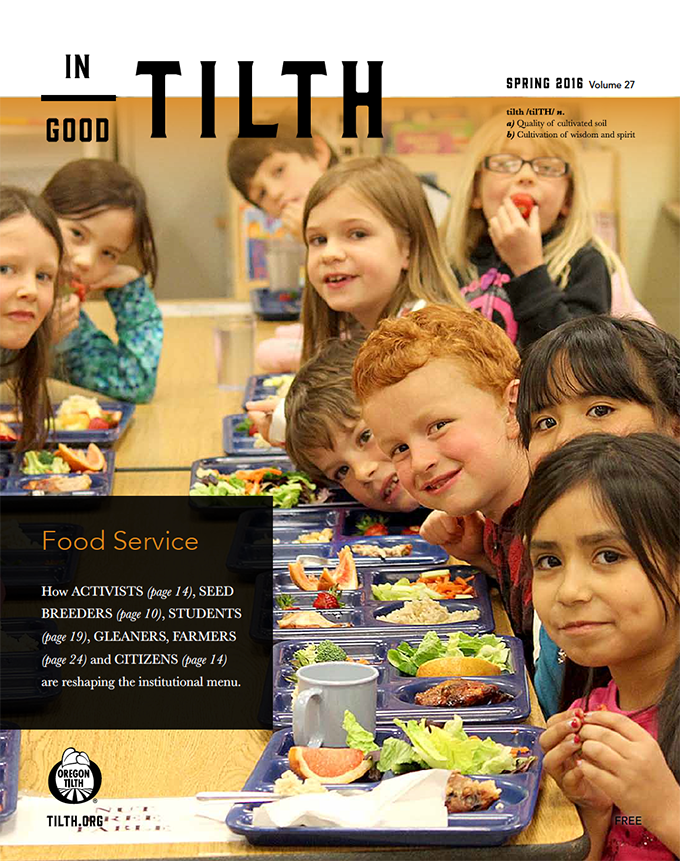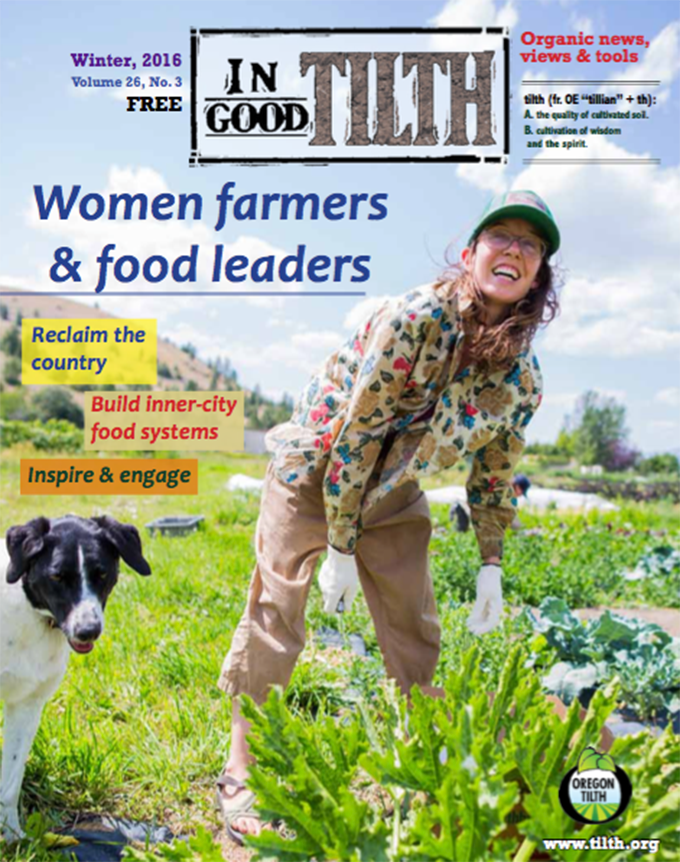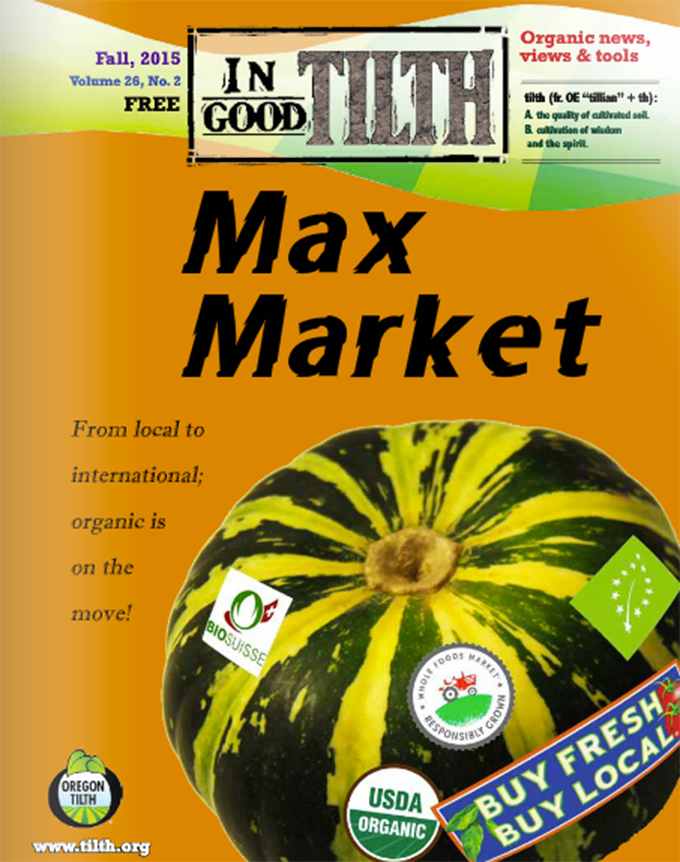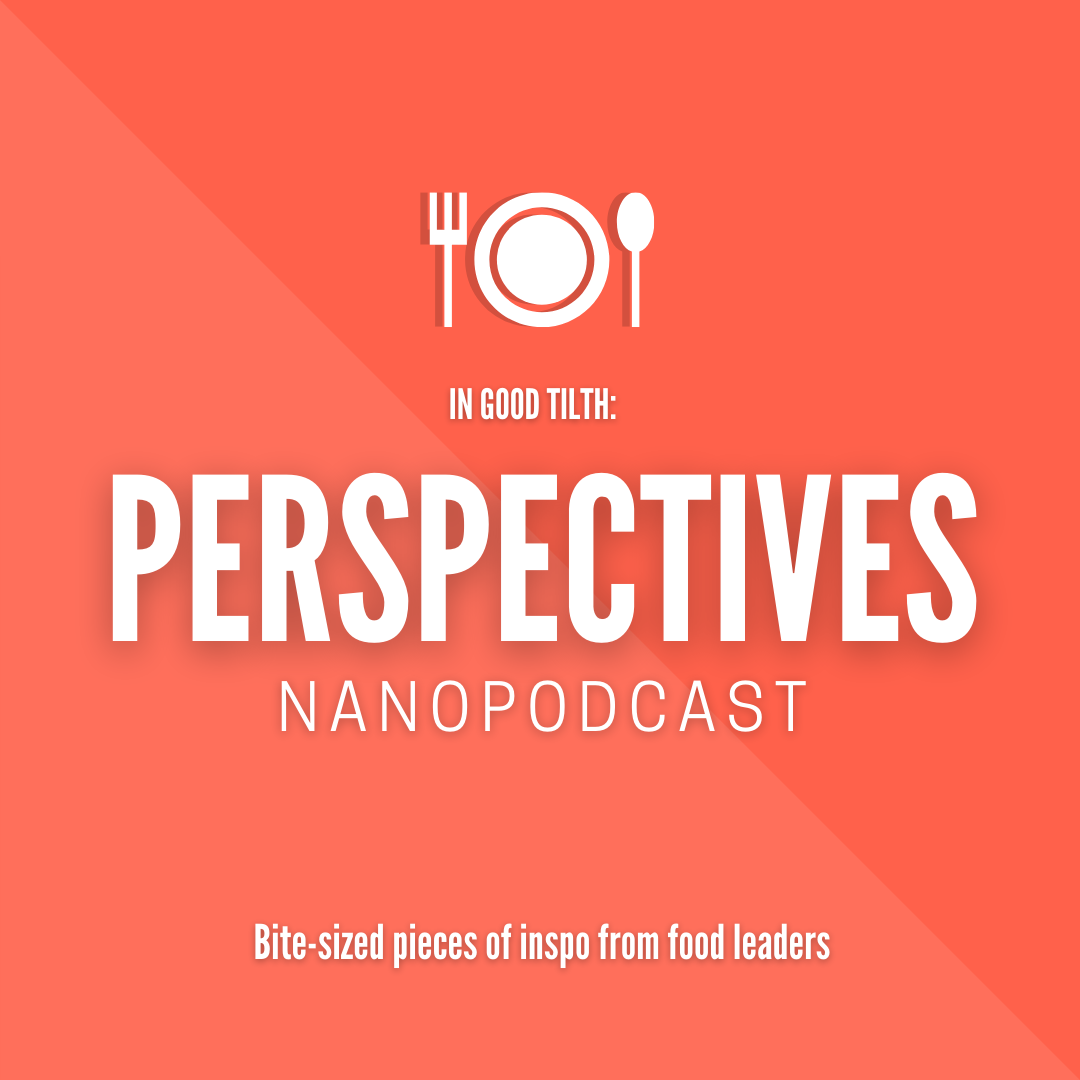Farming is on an upswing, and growing proportionally as groups are organizing to fight harmful factory farms, create social support for farmers, ensure equitable access to healthy food and encourage a sustainable food system. A growing number of women are on the forefronts of food activism and the farming renaissance.
Organizations like Friends of Family Farmers in Oregon and The Greenhorns in New York are working to grow and support the next generation of farmers. Women like Lauren Ornelas, founder of Food Empowerment Project, know that our food choices have the power to make real change in the world. Amber Lambke, a Maine woman who opened a grain mill, has revived grain farming in the Northeast. And Meredith Leigh, who has worked all angles of farming and animal husbandry, believes that creative problem solving is a must to feed people ethically, responsibly and sustainably.
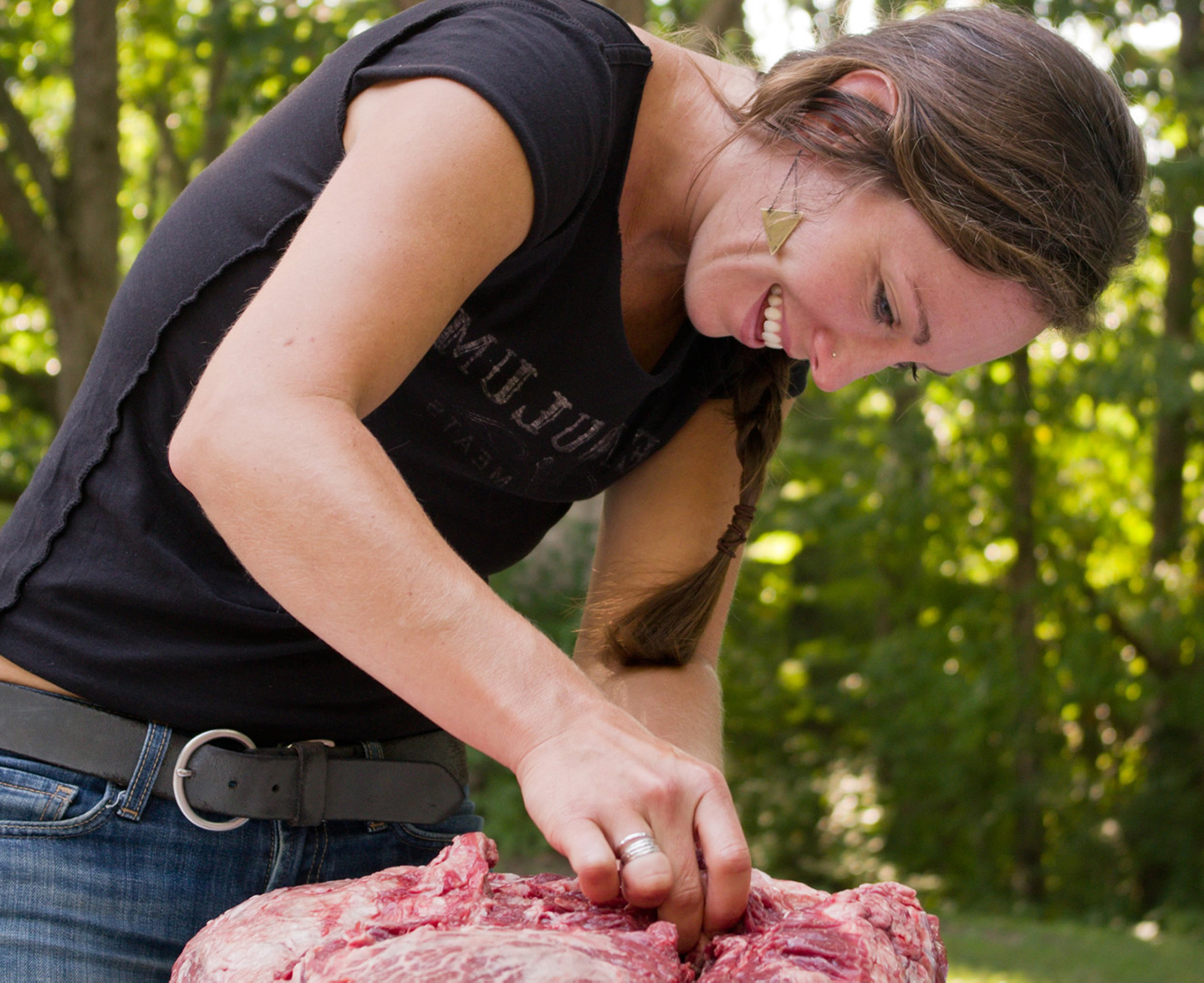
Getting real about good food
“If we’re going to get real about good food, we’re going to have to come up with some super out-of-the-box ideas,” says Leigh, who lives near Asheville, N.C., and just published The Ethical Meat Handbook.
Leigh, 32, owned her own farm for 12 years, raising everything from cut flowers to vegetables, but focused on pasture-raised livestock. She and her now ex-husband opened a butcher shop and restaurant in an attempt to model a new structure for marketing and processing local meat. “I was in the buyer role for the restaurant. I’d farmed, I’d worked in advocacy,” she says. “I had this angle on the entire supply chain.”
Leigh gave a whole-hog butchery demonstration at a Mother Earth News Fair and was approached by a publishing company to write her book. “It’s a technical guide for home butchery, but it’s more than that,” she explains. “It’s about incorporating animals into your homestead. It’s also connecting the dots for people about what is going on in the supply chain, trying to understanding what the opportunities and obstacles are in terms of getting good meat on our plate.”
Leigh now works for Living Web Farm, a nonprofit research education farm in Mills River, N.C. She does outreach and education, and works with a flock of 100 sheep and heritage Tamworth hogs. “What I’m really excited about is ultra high-density grazing, plant-animal fertility dynamics and rotations,” she says. “I see that as the future. The question is, how are we going to integrate intensive agriculture, both vegetable and animal, to take advantage of that natural trophic exchange instead of managing them in isolation?”
Her book takes an open-minded, problem-solving approach to the food system. “This is about a whole other sphere of meat production that is trying to scale up against this churning, industrial machine,” Leigh says. “I’m trying to be radical without alienating people.”
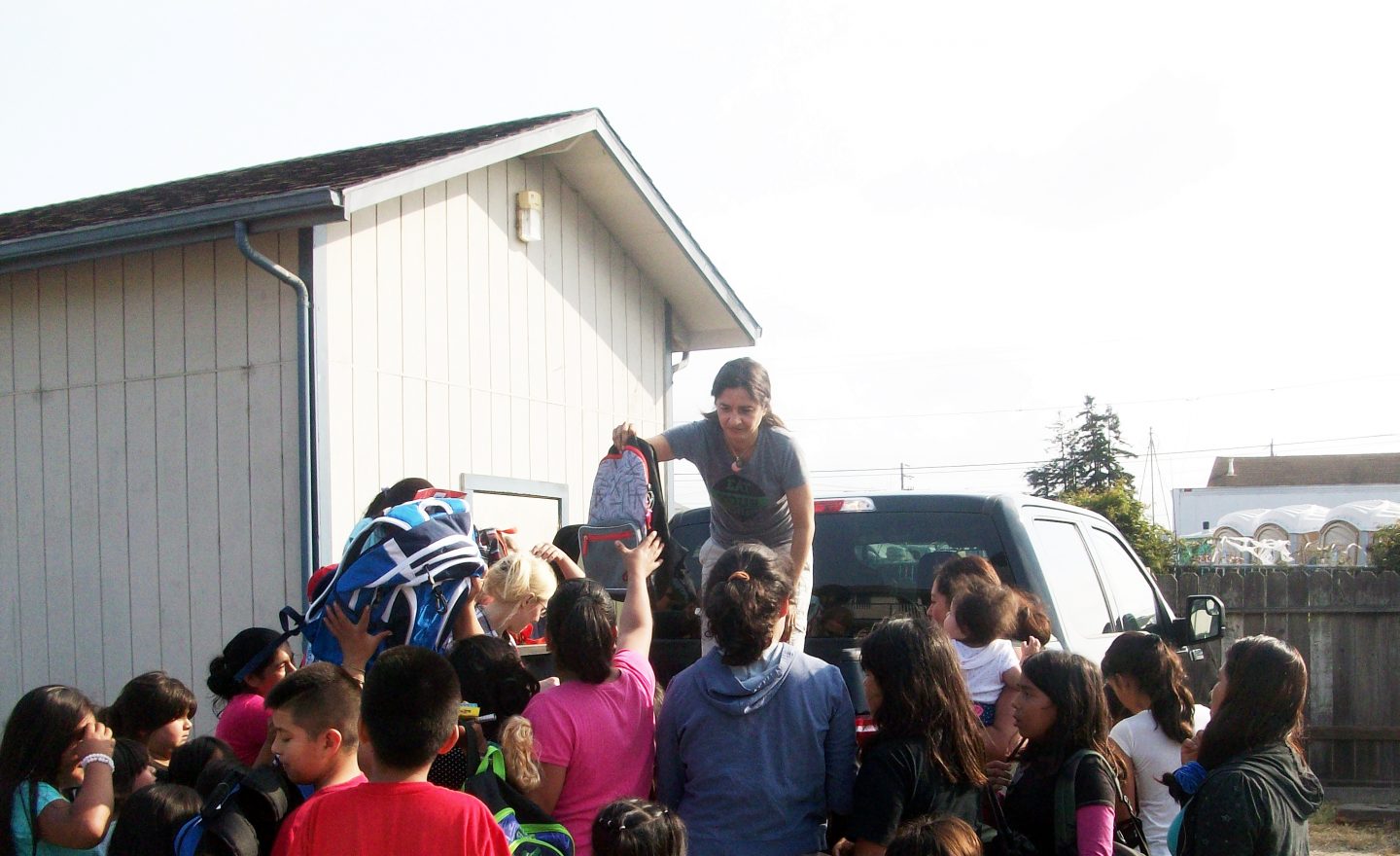
We’ve all got to eat, but how
There are two ways to raising animals: the industrial meat system, which supports the inhumane treatment of animals, and the small livestock farmer who can’t realistically compete with the inexpensive, abundant meat produced by that the industrial meat system.
The dialog has primarily been either, “don’t eat meat” or “support the juggernaut.” Lauren Ornelas, founder of the Food Empowerment Project (FEP), hopes that people won’t eat meat and will opt out of other foods that aren’t socially just. Her organization, based in Cotati, Calif., offers vegan alternatives to traditional Mexican recipes and monitors unfair working conditions on farms, animal abuse and lack of access to healthy foods in communities of color and low-income communities.
“My work is focused on food, because people eat every a day, and they can really use their food as a force for positive change in the world,” says Ornelas. “My goal has been to give people who care about these issues tools to eat their ethics but also to use their collective voices to create change.”
Ornelas, 45, grew up in Texas and became a vegetarian at a young age. As a child, her family supported the United Farm Workers boycott. In high school, she went vegan, and she has since dedicated her energy to animal rights and social justice issues.
She founded FEP in 2007, and in 2013 quit her day job to focus on it full time. FEP monitors issues such as child labor in the chocolate industry. The organization has an app that reflects the most recent research on which companies source their chocolate from problematic areas. “Our app has been downloaded more than 2,000 times,” Ornelas says proudly.
FEP encourages people to buy organic whenever possible, although Ornelas is fully aware that many people living in our country have more access to liquor stores than fresh tomatoes. “When you buy organic, that doesn’t mean the farm workers are being treated any better,” she says, “but it means they’re not being doused with chemicals. I’m a Chicana, so farm worker issues and access to food is really important to our community. As an organization encouraging people to eat more produce, we can’t deny the suffering of farm workers in the field.”
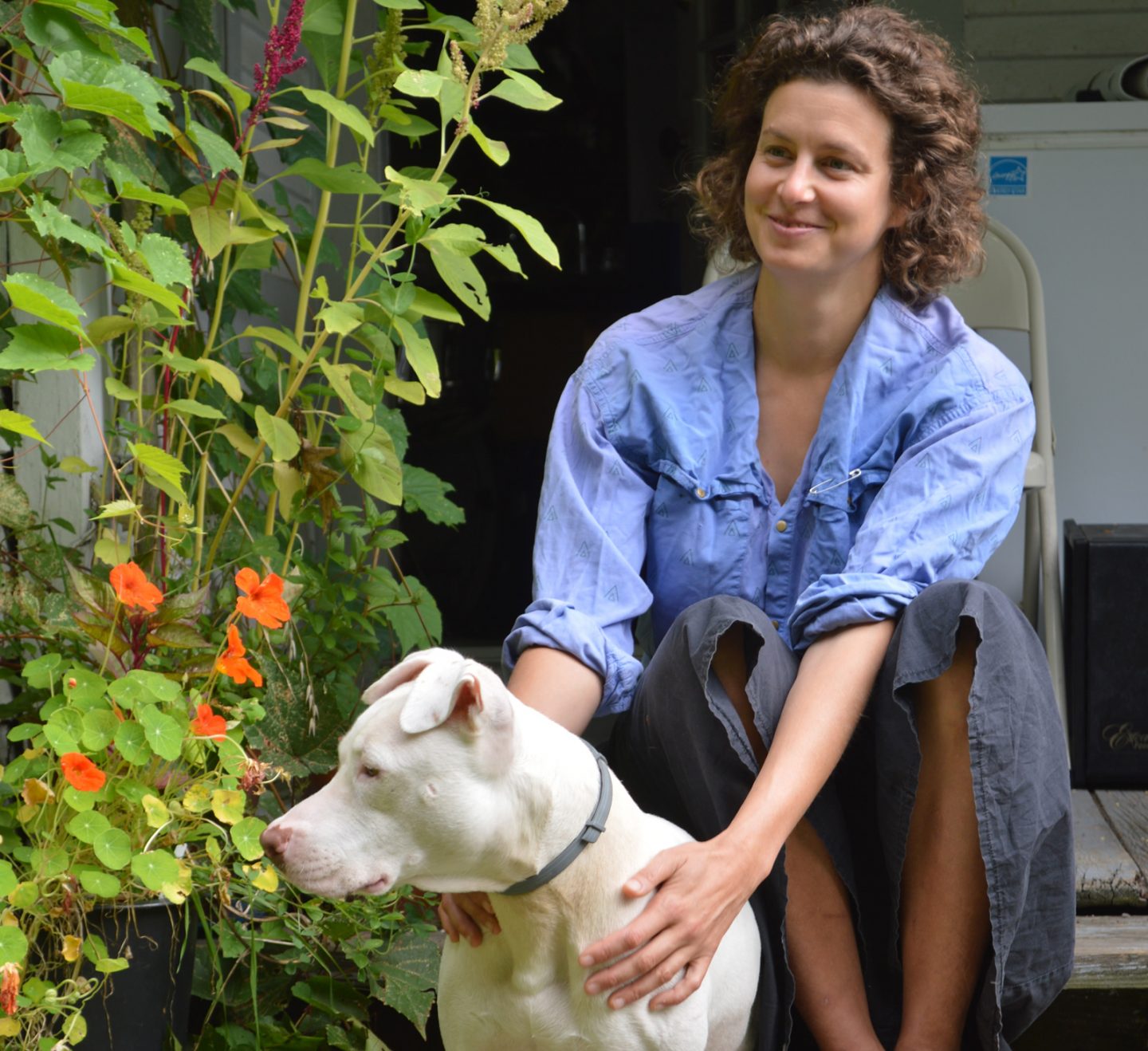
Fighting the rising tide
More need for plant-based food sources means more and better-managed farms. Between 2002 and 2007, the U.S. farm count rose four percent — rising for the first time since 1935. The number of farmers aged 34 and younger grew by nearly 40 percent in the five years from 2007 to 2012, the last time the USDA released statistics.
Because there is no blueprint for the new farming world, the most successful farm startups grow healthy communities as well as healthy plants. The Greenhorns, founded eight years ago by 34-year-old Severine von Tscharner Fleming, recognizes that to have more farmed acres, we need more bodies. And those bodies need support.
“Having been a young farmer, I navigated the lists of apprenticeships and organizations that facilitate the entry of young people into agriculture,” Fleming says. “Those resources were very good but regional, so we felt it would be useful to help direct people to the resources that exist and celebrate the work of entry, and make the process of entry more social.”
The typical pathway for many farmers is to apprentice, become a wage laborer and then take on a management role. “Then you build up your gumption and start a farm of your own,” she says. “We wanted to sustain the humans through that process so that more make it through that process. Having a healthy social life and community life, and team spirit is crucial.”
The fastest-growing group of farmers and ranchers is 65 and older, according to census statistics compiled by the U.S. Department of Agriculture, but in 2012, nearly 2,150 farmers under age 35 were running farms, including 185 under the age of 25. That compares to 159 farmers age 24 and below in 2007, and another 1,720 aged 25 to 34. According to a National Young Farmers’ Coalition report, 78 percent of young farmers did not grow up on a farm.
Severine von Tscharner Fleming says these young farmers are creating a dendritic nerve center within farming; that’s one thing the sustainable ag movement has going for it that “the system” doesn’t. “It’s a polycentric government where governance is highly distributed and localized,” she says, “and that’s got a lot to do with some really capable women working on a very uncompetitive basis for the betterment of their regional farm economy.”
Starting near the beginning of the year, The Greenhorns is undertaking a countrywide tour of granges to explore how granges might play a role in a community’s economy.
The Greenhorns has also started a video series called Our Land. Each short film highlights people working to surmount problems in our industrial-food economy. Our Land takes on issues such as super sizing of distribution networks, soil toxicity and monoculture. According to Fleming, “Each of these films looks to give inspiration to young people who are trying to mentally square off against the beast.”
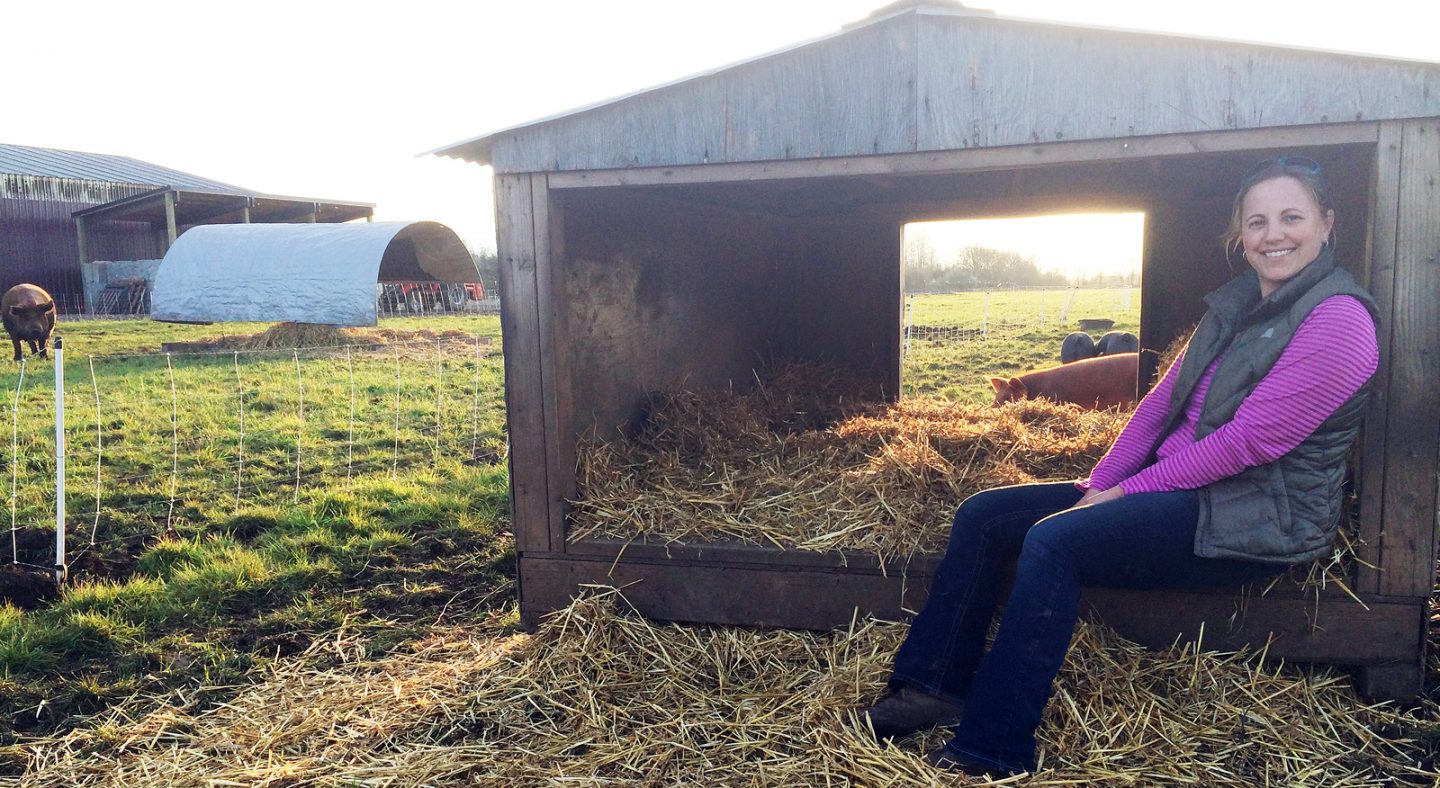
Help for family farms
That “beast” takes on many forms. For Kendra Kimbirauskas, CEO of the Socially Responsible Agriculture Project, that threat is often the Concentrated Animal Feeding Operations (CAFOs) that spell financial and environmental doom for small family farms and the communities they take over.
Kimbirauskas, 37, grew up in Michigan on a small dairy farm operated by her father and grandfather. She observed the stress on the family during the 1980s, when milk prices “dropped through the floor.” “Farmers were losing their farms left and right,” she recalls. Her dad didn’t lose his farm, but he did enter into the dairy herd buy-out designed to cull milk-producing cows so prices would increase. “That was a really tumultuous time,” Kimbirauskas says. “Even though I was a little kid it burned something in my mind.”
She was an only child and hated spending every summer farming. “I wanted to get as far away from agriculture as I could.”
Kimbirauskas almost made it. Her plan was to study for the foreign-service exam while working as a legislative assistant in the Michigan Senate. Her senator, the minority vice chair of the Senate Agriculture Committee, was running for Congress, so Kimbirauskas experienced farm-law lobbying regarding huge dairies coming in to the state.
She says well-dressed people would show support for large dairies trying to enter the state, while people who looked like her family came into her office complaining that the incoming dairy operations were a huge problem. “My eyes opened,” she says. “Why is it that little dairies all over the state went out of business, and now we’re having these 7,000-head dairy operations come? I had to make a difference.”
Kimbirauskas scrapped plans to go abroad and worked for several years for The Sierra Club across the Midwest, and moved to Oregon in 2003. In 2005, Kimbirauskas cofounded the Oregon-based nonprofit Friends of Family Farmers to fight Threemile Canyon Farms, a 55,000-head dairy factory outside of Boardman, Ore.
In 2006, Kimbirauskas and her husband started their own 46-acre farm raising heritage livestock. She joined the Socially Responsible Agriculture Project and in 2012 became its CEO. SRAP gets SOS calls from communities who discover that a CAFO wants to locate there. Kimbirauskas says these operations typically have everything lined up before neighbors have a clue. “We have about 25 people across the country who specialize in different areas — lawyers, community organizers, media specialists–and we jump into action,” she says. “We figure out what we can do to stop the operation.”
Kimbirauskas is also on the board of Friends of Family Farmers, which has a young-farmers program called iFarm Oregon. The program links people who are leaving agriculture, because of retirement or other reasons, with people who are interested in getting onto the land. The organization provides succession-planning advice for farmers and their families, and provides beginning farmers with resources and mentors.
When previous generations of farm kids took over the family’s farms, they had access to decades of shared knowledge. That is no longer the case. “iFarm Oregon is all about trying to understand that we are working with a different way of passing down knowledge from one generation to the next,” Kimbirauskas says. “How can we maximize that opportunity?”
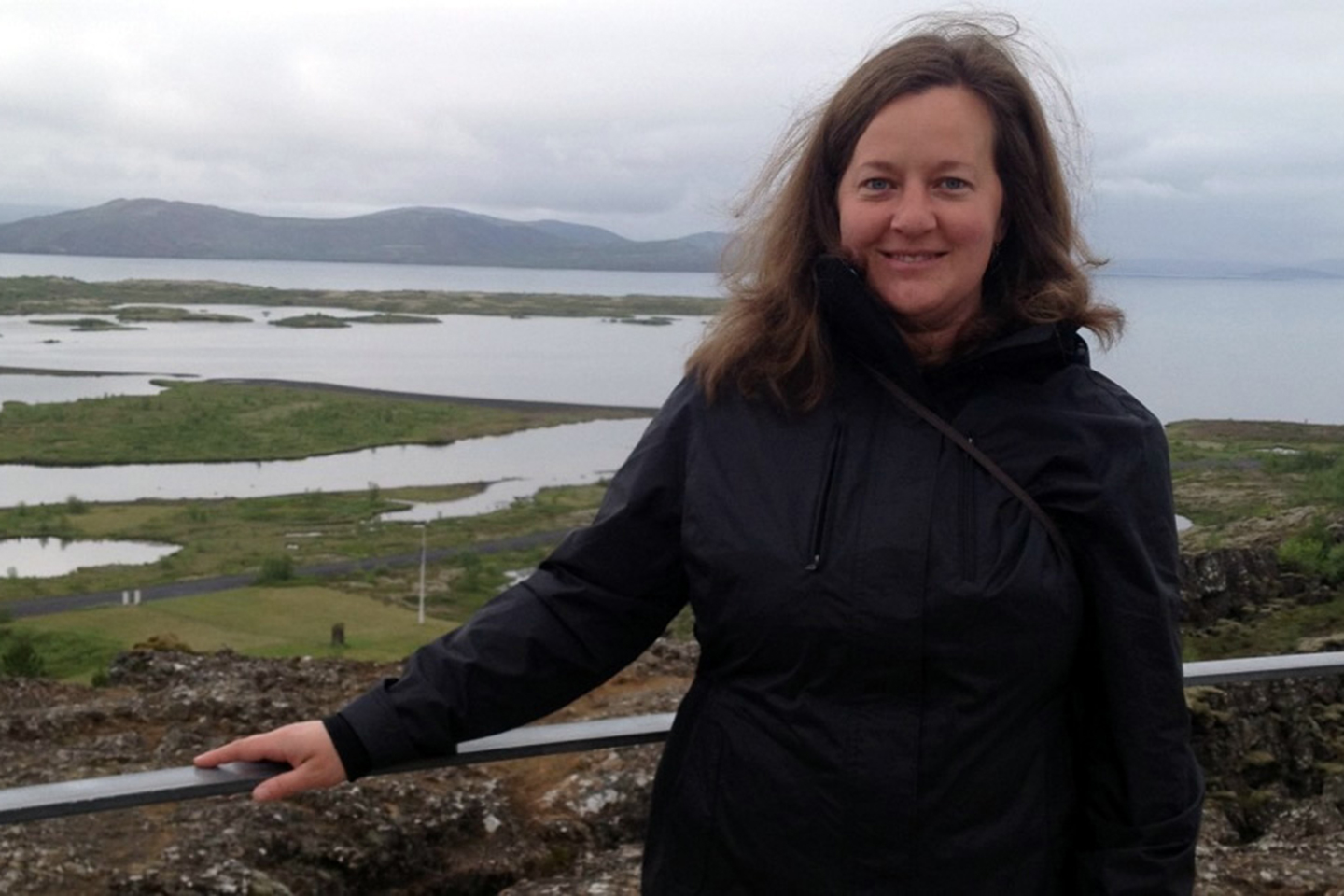
Building on tradition
According to USDA statistics from February 2014, Maine has more young farmers and more acreage in farms than anywhere in the nation. From 2007 to 2012, young farmers in Maine increased from 396 to 551, surpassing the 1.5 percent increase in the United States as a whole. Amber Lambke, a Maine native, has helped spur that increase.
Lambke, 41, worked as a speech-language pathologist in Skowhegan as her community sought ways to revitalize its downtown and grow its farmers market. “There was an organized effort forming to get community members involved with imagining a future here,” Lambke says.
In 2007, Albie Barden, a master mason who builds wood-fired ovens, approached Lambke with an idea. Barden had built ovens all across the country and noticed an increase in bakers wanting to use locally grown grains. At that time in Maine, Lambke says, grain was grown for animals but it lacked supply and quality. “We started asking questions,” Lambke says. “What does it take to grow bread wheat?”
Maine once was a robust producer of grain, and yet now there was a knowledge gap. Barden proposed a conference for farmers, millers, bakers, oven builders and brewers to determine what it would take to revive regional grain production.
That conference, which became the Kneading Conference and is still taking place, inspired Lambke to quit her job, partner with a friend and build a grain mill. “We wanted to make grains more marketable in our region,” Lambke says. “I thought there’s nobody better to tackle this than me, if I’m willing to put the pieces back together. All too often the discussions in our rural communities involve what the resources are that we can find outside of our community. How do we find a wealthy developer? How do we find a business from far away to put their franchise here? That’s frustrating when you live in these communities, and you know the talent that’s here. The answer is rolling up our sleeves and learning the things we don’t know yet in order to execute the solutions ourselves.”
Lambke converted a historic former jailhouse in downtown Skowhegan into Somerset Grist Mill which opened in 2012. Lambke’s mill is now buying and processing wheat, oats, rye, buckwheat, corn, spelt and heritage grains purchased from the region, with distribution throughout Maine and as far south as New York City.
The mill processes organic grain and grain that is not chemically treated but is grown on uncertified land. “There is just not enough certified land in the Northeast in grain cultivation to keep our mill busy all year, so we felt that we needed to be invested in farmers that would be willing to convert to organic,” she says.
Somerset Grist Mill did $250,000 in sales last year, their second year in operation. That will likely increase in 2016 to about $350,000 in sales, which equates to roughly 350 tons. Lambke’s goal is to process at least 1,000 tons per year, which means 1,000 acres of grain.
That volume is as much as a commercial mill can produce in a day, though, so Somerset Grist Mill is a long way from displacing the use of white flour. In the 1830s, Lambke’s county produced 239,000 bushels of wheat — which translates to 7,170 tons — at a time with horse-drawn equipment and hand harvesting. “We’re not going to see those numbers any time soon,” Lambke says, “but it certainly holds promise for bringing fallow land back into useful production.”

